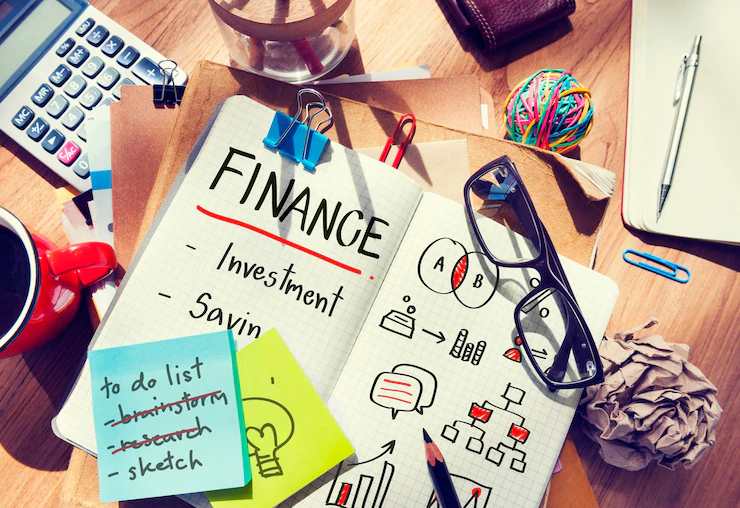The Ultimate List Of Famous TikTok Girls (2025): Who’s On Top, How They Grow & How Much They Earn?
Subhasree Nag, 2 days ago

Subhasree Nag, 2 days ago

Subhasree Nag, 4 days ago

Subhasree Nag, 4 days ago

Subhasree Nag, 5 days ago

Subhasree Nag, 6 days ago


Do you often pay your bills after the due dates and took an instant loan no refusal? Do you get calls from collection agencies? It can be a warning sign meaning your debt piles up and soon becomes unmanageable. Many Canadians find it challenging to repay the current debt on time and prefer to put it off as long as possible.
It may be tempting to believe that the bills will vanish or your debt will tackle itself. One of the best methods for tackling a big issue is to break it down into smaller steps.
These steps should be manageable and achievable. Keep on reading this step-by-step guide on how to get out of debt in Canada.

We all may experience temporary issues with personal finances once in a while. Many consumers live from paycheque to paycheque in Canada today. Statistics Canada claims that Canadian consumers owe $1.83 in consumer debt for each dollar of income they have.
Economic disruptions and the global pandemic have affected their financial stability and well-being. Are you having problems with debt repayment? Think about a big project you are planning to do.
For instance, you are meaning to get a home renovation project done. If you postpone this decision, the project won’t do itself. On the other hand, if you divide the project into achievable milestones and renovate each room in your house one by one, you will find it much easier and less daunting.
Similarly, if you break the repayment plan down into smaller steps and tackle each part at a time, you will gradually notice the difference.

A monthly budget is essential as it tells you where your money comes from, how much you earn and spend, and whether there is something left for your financial plans. It’s an important step to create your budget so that you finally take control of your personal finances.
You may take advantage of Statistics Canada’s Personal inflation calculator to calculate your personal inflation rate to understand how your spending habits compare to those of other citizens of Canada.
The following tips may help you with budgeting:
The majority of credit companies will check your credit report to define whether you are eligible for their lending options. If you have already taken some loans or have several credit cards and want to repay existing debt, you should learn more about your credit rating.
Order your free annual credit report from one of the credit reporting bureaus to verify if it’s error-free. What may affect your score? The history of payments can seriously influence this three-digit figure. If you failed to make on-time payments or didn’t pay the minimum balance on your credit cards, your score will drop.
Generally, the credit ratings range from 300 to 900 in Canada. If your credit is over 600, it’s considered good. Lower scores may decrease your chances of getting approved next time you urgently need additional money.
It’s essential to create a list of your present debts. Whether you need to pay off a mortgage, a credit card, an auto loan, or a payday loan, write all of them down. Make sure you include the total amount you owe, the minimum monthly payment, as well as the interest rate.

Then start your repayment plan. Set a certain payment timeframe so that you can stick to it and plan the debt repayment. This plan should be affordable and reasonable. Don’t make this timeframe too long as you may become less motivated and lose concentration.
Also, the longer repayment term means more interest. A too short repayment term will make it difficult for you to keep up with regular payments. Debts with higher interest rates need to be covered first so that you become debt-free faster.
Once you have a monthly budget and a repayment plan, it’s time to take control of your spending and finally get rid of debt. Make your plan work for you and help you achieve your goals. You might want to turn to a credit counselor or create your own repayment plan. Try to be consistent and focused.
Remember to make minimum payments on each type of debt by the due date. A good idea is to set reminders or automate your payments. Any additional income or funds you have by the end of the month should be put toward debt payments.
If you tried it and haven’t met your obligations so far, it may be a smart option to turn to a professional financial advisor to help you find alternative ways of becoming debt-free again. Try your best to stick to your existing plan and take action.
To sum up, debt repayment is a continuous process that depends on each situation. It’s important to determine all your types of debt and know how much exactly you should allocate each month toward these payments.
It’s a long process to get out of debt but if you take action and start managing your money, the debt will become more manageable and less overwhelming.
Stay motivated and reduce your spending at least during the repayment period. Lowering your monthly expenses may increase the sum you can use for paying the debt off faster.
Read Also:
Arnab Dey is a passionate blogger who loves to write on different niches like technologies, dating, finance, fashion, travel, and much more.